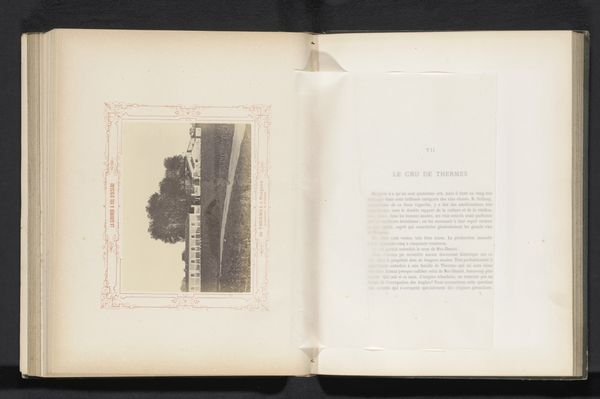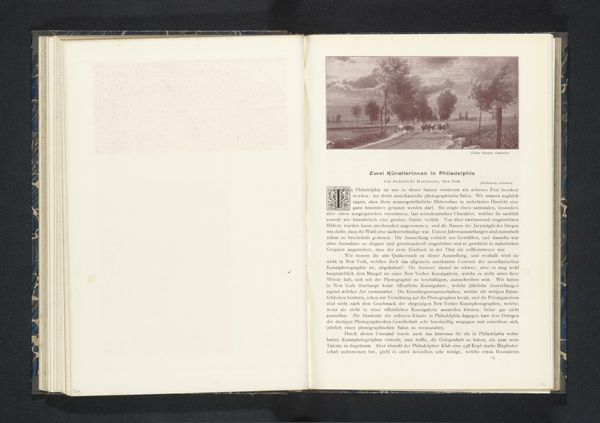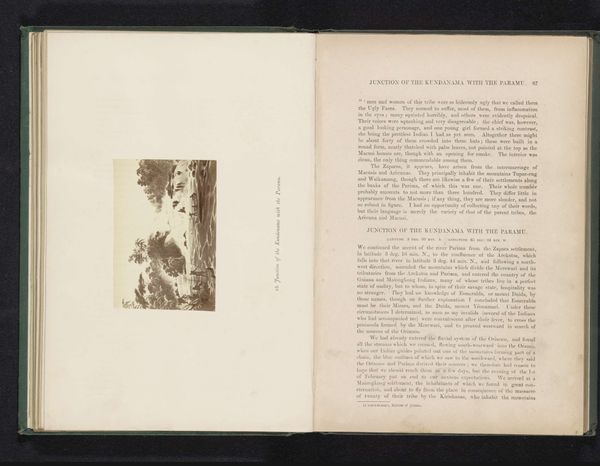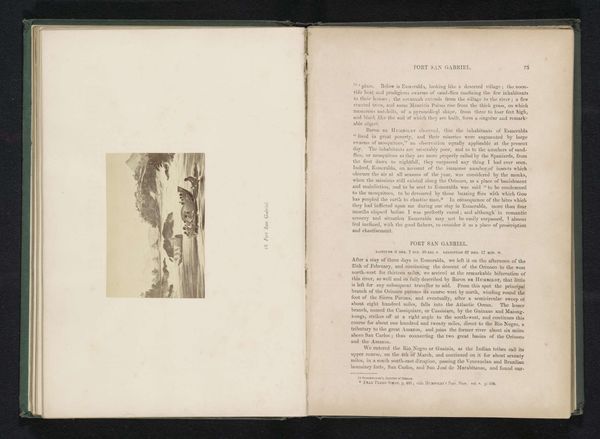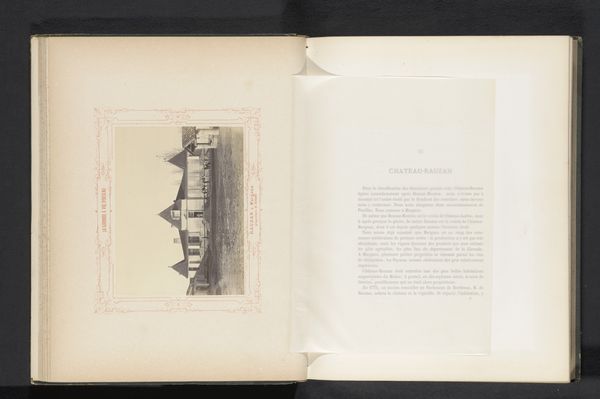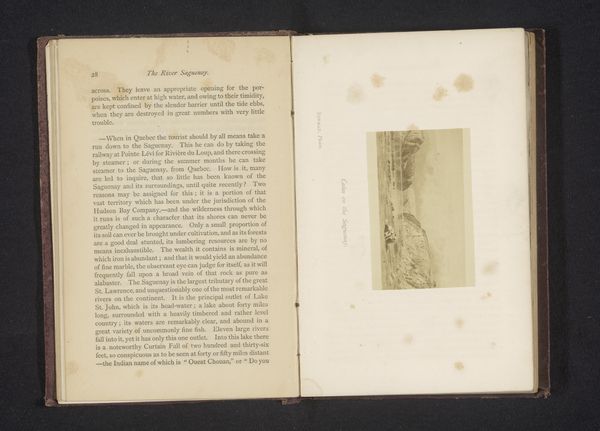
Fotoreproductie van een schilderij, voorstellende een gezicht op Beiroet before 1868
0:00
0:00
print, photography, albumen-print
#
aged paper
#
homemade paper
#
paperlike
# print
#
typeface
#
sketch book
#
landscape
#
photography
#
personal sketchbook
#
fading type
#
orientalism
#
stylized text
#
thick font
#
albumen-print
#
historical font
Dimensions: height 88 mm, width 141 mm
Copyright: Rijks Museum: Open Domain
Editor: Here we have a photograph, or rather a photo reproduction, of a view of Beirut, created before 1868. It's adhered inside what appears to be an old book or sketchbook. The print itself is sepia-toned and quite faded, giving it a melancholic, almost ghostly feel. What strikes you about the composition? Curator: The stark contrast between the dense cityscape and the vast, empty sky is certainly compelling. It isolates Beirut, presenting it as a discrete entity defined by its built environment. Consider the use of albumen print; it was specifically chosen for its capacity to achieve sharp detail within the photographic positive, something notable given the wide scope. Do you see any implications to using a process for crisp detail, rather than artistic expression? Editor: It definitely directs the focus toward documenting, and not, say, romanticizing the city. So it is about form? I notice also how it has been "framed" by being placed in what could be seen as an album, as opposed to hanging on a wall in a gallery. Curator: Precisely. Placing the albumen-print reproduction within the book is a conceptual move; note how the materiality and texture of the old book's paper create a visual dialogue with the image. The aging creates a tonal harmony as well as implying that both object and image are historic. Can we say that the book then recontextualizes our reception of Beirut, encouraging us to view it through a temporal lens, beyond the immediate moment of the photographic exposure? Editor: That's fascinating, almost like two time capsules interacting! I hadn’t considered how the photograph's materiality contributes to our reading of the cityscape itself. It adds another layer to its interpretation, far beyond just its subject. Curator: Indeed, by closely observing its form and placement, we've accessed new possibilities.
Comments
No comments
Be the first to comment and join the conversation on the ultimate creative platform.

